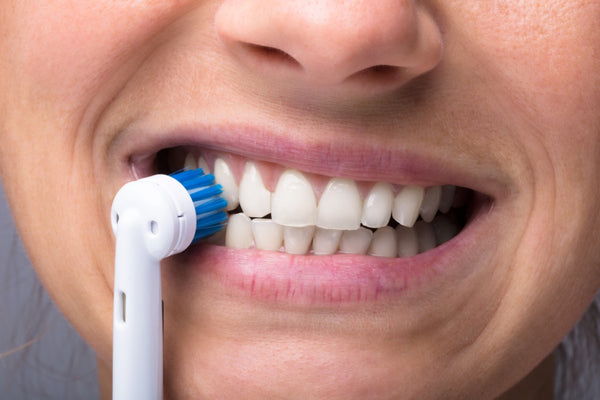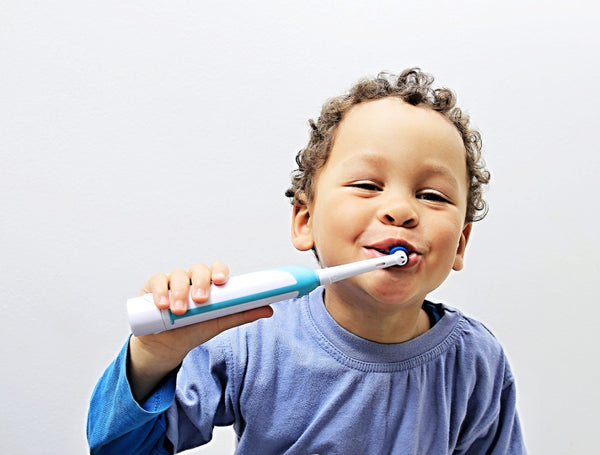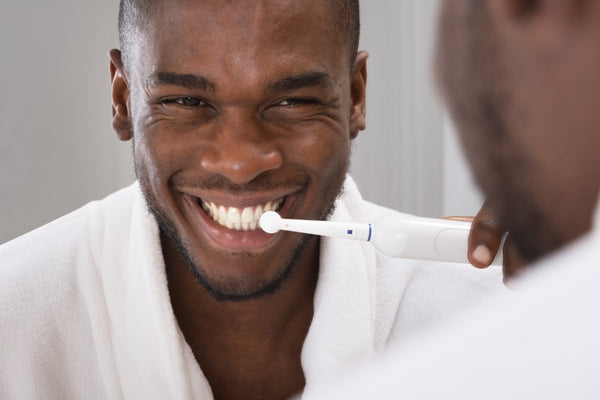From ancient chew sticks to the first bristle toothbrushes, humans have always sought ways to maintain oral hygiene. But perhaps the pinnacle of achievement has been the invention of the electric toothbrush. Providing a convenient, efficient and thorough method of brushing away plaque and accurately fulfilling the dentist’s orders to get 2 minutes of toothbrushing ticked off the to-do list, electric toothbrushes have become the go-to solution for many.
Before we get caught up with highlighting the benefits of these oral hygiene marvels, let’s learn a little about the history of electric toothbrushes:
First toothbrushes
The earliest toothbrush records date back to the era of the Babylonians and Egyptians between 3 000 and 3 500 BC. These people groups were believed to have created toothbrushes using frayed twigs, with evidence of chew sticks available to historians in ancient Egyptian tombs.
It was the Chinese who created the first natural bristle brush in the 1400s using pig’s hair for the bristles and bone or bamboo for the handles. The concept was later taken to Europe where pig hair was replaced by horse hair.

Many credit Englishman William Addis with the invention of the modern toothbrush in 1780 using a handle made of cattlebone and a brush made out of pig’s hair. It was only in 1844 when the first 3-row bristle brush was invented and later in 1938 nylon replaced the pig/horse hair bristles.
Egyptians used paste to clean their teeth from as early as 5 000 BC with a similar purpose as today - to whiten teeth, freshen breath, and clean teeth and gums. The composition of the paste was, however, more abrasive and less hygienic. For example, some pastes contained burnt eggshells, pumice, crushed bones, charcoal, chalk, soap etc.
Electric toothbrush origins
-
It was only in 1954 that the first electric toothbrush was invented by Dr Phillipe-Guy Woog in Switzerland. Known as Broxodent, its biggest flaw was its reliance on an electrical outlet to provide power.
-
In the 1960’s, the first portable electric toothbrush was designed, but it was bulky and had a short battery life. The batteries were not replaceable, so when they died, the entire brush needed to be replaced.
-
By the 1990s, battery-operated toothbrushes superseded Broxo’s design.
-
The first ultrasonic toothbrush - called Ultima - launched in 1992 in the US, initially working on ultrasound. Later, a motor was added to give the brush a sonic vibration.
-
Electric toothbrushes were originally created to serve those with limited mobility or orthodontic patients.

- There are two approaches to electric toothbrush technology in modern use.
- Sonic (making use of vibration to clean teeth at a rate of between 30,000 and 40,000 strokes per minute).
- Oscillating electric toothbrushes use a rotating brush movement or side-to-side movement with 3,000 to 7,500 rotations per minute, while regular toothbrushes average around 300 strokes per minute.
Benefits of electric vs manual toothbrushes
While electric toothbrushes are pricier than their manual counterparts, they offer several advantages to modern-day users:
1. Advanced technology - ensures more thorough and consistent cleaning. Their oscillating or rotating heads remove plaque and food particles more precisely.
2. Built-in timers - enable users to brush for the recommended 2-minute duration (twice per day). Many turn off after two minutes or give a beep to indicate that the time’s up, making the goal of brushing teeth for longer that much more achievable.
3. Pressure sensors - incorporated in many electric toothbrushes, these sensors alert users if they are applying too much pressure, which can cause damage to teeth (something you wouldn’t be aware of when using a manual brush).
 4. Adaptable - you can select a toothbrush to suit your requirements more specifically. For example, whitening, sensitivity, gum care etc.
4. Adaptable - you can select a toothbrush to suit your requirements more specifically. For example, whitening, sensitivity, gum care etc.
5. Reduce waste - users of manual toothbrushes are urged to replace their toothbrushes every 3 months, but electric toothbrushes only require you to change their heads, sending less waste to landfill sites.
6. Good for your gums - A study shows that users of electronic toothbrushes experience less gum recession.
Access oral hygiene at the click of a button at Smile Shop
The invention of electric toothbrushes ushered in an era of ease, efficiency and advancement. And what better way to access these dental wonders than with the convenience of online access?
Smile Shop is South Africa’s first online store offering a diverse range of premium home dental care products (including electric toothbrushes) at the simple click of a button.
All our products are tested and hand-selected by a professional dentist, assuring you that the products you purchase with us are going to advance your daily oral regimen.

